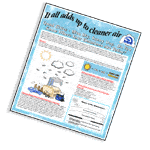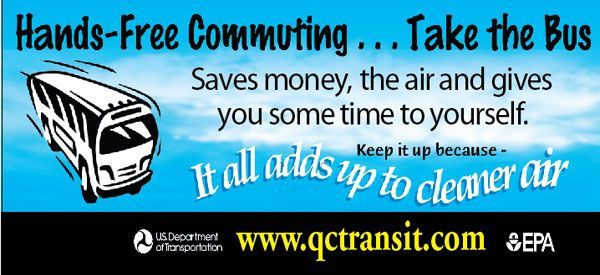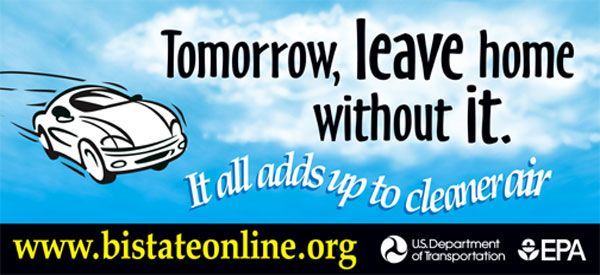- Details
- Written by: interGen support
- Category: Planning - Other Programs
- Hits: 4922
Page Content goes here
(QCRFC and other watershed efforts)
- Details
- Category: Planning - Other Programs
- Hits: 17110
Solid Waste Management includes coordination with county-level solid waste agencies, comprehensive planning, research for funding opportunities, and grant applications to achieve state waste reduction goals. Coordinates Bi-State Waste Coalition public education efforts in 8-county region including website and current waste tire education campaign.
- Details
- Written by: Sarah Grabowski
- Category: Planning - Other Programs
- Hits: 17265
Disaster Relief and Recovery provide information and resources for community efforts to address disaster relief and work with citizens to recover from natural and man-made disasters. Pre-planning assistance is available to communities through hazard mitigation planning and evacuation planning. Both state and federal assistance may be available to aid pre-disaster planning and required to enable local governments to access disaster funds when needed.
- Details
- Category: Planning - Other Programs
- Hits: 17429
Parks and recreation are important to quality of life in the Bi-State Region. These public facilities offer opportunities for exercise, recreation and relaxation as components to public health. The built environment affects health, either positively or negatively. Healthy community planning examines how we incorporate healthy, positive lifestyle options into our region through facilities, programs, or services. Community plans that include sidewalks, bicycle paths, parks, and open space provide the foundation for healthier citizens. Bi-State Regional Commission can assist members with parks and recreation master plans, site concepts and grant applications to expand or enhance park and trails facilities.
Greenway Planning provides area or county-level plans to establish a system of open space corridors, either for active use (trails, scenic byways, etc.) or passive use (wildlife/plant preservation, floodplain management, erosion control, water quality improvement, etc.).
Safe Routes to Schools Planning provides school-level plans to identify barriers and solutions to increase the number of kids who walk or bicycle to a school.
Park and Recreation Planning includes either system or master plans on a community-wide or site plan basis.
Regional Conservation Directory is a directory of federal and state environmental, conservation and natural resource agencies and includes various citizen advocacy references. Available for purchase. General Technical Assistance and Special Studies.
Other Healthy Initiatives include partnering with the Quad City Health Initiative for Be Healthy QC to create a culture of wellness that supports healthy eating and active living. The goal is to increase the percentage of adults and children who are at a healthy weight through worksite wellness programs/policies, comprehensive school wellness policies, nutrition and physical activity for children 0-5 years, improvements to the built environment, increased access to healthy foods, and an overall health promotion campaign.

- Details
- Written by: admin
- Category: Planning - Other Programs
- Hits: 18127
Elected officials and community staff are challenged to meet environmental goals and mandates, implement controls and manage resources wisely and cost effectively. Bi-State staff can provide assistance with information and resources on floodplain management, stormwater management and erosion control, wetland mitigation, historic preservation, conservation, solid waste management, greenway planning and development, riverfront development, park and recreation planning, air and water quality.
Development Ordinances assist in development and interpretation of environmental ordinances, addressing, zoning, subdivision, flood plain management, stormwater and erosion control, conservation or riverfront overlays and other environmental areas.
Environmental Assessments and Reviews at a county level for land use conversions. Conducts environmental reviews for grants in compliance with NEPA requirements.
Floodplain Management offers assistance with floodplain ordinances and management issues. Maintain current copies of the Federal Emergency Management Agency (FEMA) Flood Insurance Rate Maps for regions identified special flood hazard areas which are available for review. Provide resource information on floodplain management, flood insurance and floodplain mitigation planning.
Grant Applications are done for parks, recreation and open space efforts, riverfront enhancements, and solid waste/recycling programs
Grant Management is done for any type of awarded project, maintaining compliance with all applicable state and federal guidelines and requirements.
Greenway Planning provides area or county level plans to establish system of open space corridors, either for active use (trails, scenic byways, etc.) or passive use (wildlife/plant preservation, floodplain management, erosion control, water quality improvement, etc.).
Park and Recreation Planning includes either system or master plans on a community-wide or site plan basis.
The major crisis on Earth today is the conservation, or lack thereof, of our environment and its natural resources. This issue is especially prevalent in the United States where natural resource consumption is among the highest on Earth. In an effort to increase environmental awareness and resource conservation, this directory provides a basis for research and data collection. This directory also lists not all, but many, of the elected officials, federal and state agencies, and organizations to contact for advice, assistance, education, or to report a problem. These elected officials, agencies, and organizations set guidelines that directly control environmental hazards and resource use. Contacting these officials, agencies, and organizations to share environmental concerns can have an influence on environmental policy.
- Details
- Written by: admin
- Category: Planning - Other Programs
- Hits: 2483
The Quad Cities Riverfront Council (QCRFC) provides an opportunity for coordination and communication of ideas among Quad Cities Region representatives including local and federal government, development and civic organizations, tourism, business, etc. In addition, members exchange information on community planning, recreational amenities, industrial and commercial development and aesthetic enhancement of our region’s shorelines.
Meetings are held the 4th Tuesday of every other month at Noon.
Annual Certificates of Appreciation
As part of its missions, the QCRFC annually recognizes important contributions to riverfront development. Individuals, organizations, or businesses may be nominated for their involvement with projects that reflect long-term beneficial use and enhancement of our riverfronts.
The 2022 Certificate of Appreciation recipients include the following projects and organizations:
- Downtown Rock Island – For its work in the preparation of plans to revitalize the District
- Iowa Department of Transportation – For its collective work with the Illinois DOT to complete the new iconic I-74 Bridge
- Illinois Department of Transportation – For its collective work with the Iowa DOT to complete the new iconic I-74 Bridge
Quad Cities, Iowa/Illinois Mississippi River Design Principles
Published in 1996, the document was prepared by an interdisciplinary steering committee comprised of Bi-State Regional Commission, local communities, a design firm, cultural and environmental representatives and local businesses who came together to create this guide for development along the Mississippi Riverfront. The document contains the Quad Cities' Mississippi River Vision, corridor planning for good design, design principles, access, river setting and resource enhancement. The document also included a summary of corridor attributes at the time of publication. These attributes have been updated in inventory efforts by River Action, Inc.
For more information please contact:
Zach Sutton, QCRFC Coordinator
Bi-State Regional Commission
1504 Third Avenue, Third Floor
Rock Island, IL 61201
(309) 793-6300
- Details
- Written by: admin
- Category: Planning - Other Programs
- Hits: 38599
 The good news is the Bi-State Region doesn’t have severe air pollution. The bad news is there have been days when air quality has been considered poor or unhealthy. These days have typically occurred between the months of May and September, our “Ozone Season” or in mid-winter and winter for fine particulates. A Bi-State Region Air Quality Task Force, formed in 1998, is making strides to raise awareness and encourage reductions in activities that contribute to smog and fine particles. The Task Force is composed of local public works officials, transit operators, representatives of major industries, state resource agencies, universities and interested citizens. For more information, download the materials below.
The good news is the Bi-State Region doesn’t have severe air pollution. The bad news is there have been days when air quality has been considered poor or unhealthy. These days have typically occurred between the months of May and September, our “Ozone Season” or in mid-winter and winter for fine particulates. A Bi-State Region Air Quality Task Force, formed in 1998, is making strides to raise awareness and encourage reductions in activities that contribute to smog and fine particles. The Task Force is composed of local public works officials, transit operators, representatives of major industries, state resource agencies, universities and interested citizens. For more information, download the materials below.
Daily Air Quality

http://www.airnow.gov
Color contours of measured Air Quality Index values show ozone levels across the specified geographic area. Maps are currently available for 38 states, the District of Columbia and parts of Canada. Complete with map archives and animation that reflects 8-hour average concentrations, calculated from observed 1-hour data.
What Is Ozone?
Ozone is a highly reactive, complex form of oxygen. In the upper atmosphere, ozone protects the earth from ultraviolet radiation. At ground level where we breath, too much ozone is a pollutant. Elevated amounts of ozone are linked to increased respiratory illness and reduction of lung function. Persons may experience symptoms such as chest pains and coughing when exposed to relatively low levels of ozone during moderate periods of exercise. Children, elderly and persons with existing respiratory problems are especially sensitive to the effects of ozone.
How Is Ozone Formed?
Ground level ozone, often called smog, is formed when hydrocarbons (volatile organic compounds or VOCs) and nitrogen oxides (Nox) mix with the energy from the sun. A hot, sunny day with stagnant air provides the basis for the sun to heat up these pollutants. A variety of sources contribute to the mix of pollutants. Sources of VOCs and NOx include emissions from transportation (motor vehicles), fuel combustion (power plants), industrial processes (factories) and consumer, commercial products (paints and solvents).
Unhealthy Episodes
Since Fall 1998, the Bi-State Region, Iowa/Illinois has been alerted by the Iowa Department of Natural Resources (IADNR) and Illinois Environmental Protection Agency (ILEPA) that the metropolitan area and small urbaqn communities such as Muscatine, Iowa have experienced a few days where air quality levels in the atmosphere have been considered unhealthy. Although the general air quality in the Bi-State Region is considered good by many of the standards for pollutants, there are recent National Ambient Air Quality Standards that have revised thresholds for concentrations of ozone in the lower atmosphere and fine particulates based on health considerations. It is this health-based threshold that concern area officials and the state agencies.
In reaction to this news, the Bi-State Region Air Quality Task Force watches the ozone and fine particulates situation and implements education efforts within the community in order to improve air quality.
Who's Involved?
Everyone is involved! Each person can make a difference. Local, state and federal officials and businesses in the Bi-State Region are working together to raise awareness and maintaining good air quality. Voluntary efforts by each of us can have a cumulative effect on air pollution during the most critical days of the year. This "Aware of Air" website is one effort to raise awareness and educate citizens and local officials on ways to help reduce air pollution episodes in the Bi-State Region.
What You Can Do To Improve Air Quality Today and Tomorrow
Find out how you can make an impact on improving air quality in the Bi-State Region. There are simple actions individuals can take to reduce unhealthy air emissions.
Each individual can make a difference in air quality. Try these suggestions to help reduce ground level ozone in the Quad Cities, Iowa/Illinois:
- Bicycle, walk, car or van-pool or use the bus instead of using your car or truck.
- Avoid congested roads or bridges by taking another route.
- Avoid excessive idling and abrupt starts and stops in traffic, at the drive-through window or waiting for your child.
- Avoid operating gas-powered lawn equipment when the weather is very hot. If you cannot postpone the activity then try to delay it until late in the day. Or better yet, use electric-powered lawn equipment.
- Postpone painting, varnishing or finishing work on hot days.
- Barbecue with an electric starter or charcoal chimney instead of using lighter fluid.
- Conserve energy in your home to reduce energy need from power plants.
- Replace incandescent light bulbs with compact fluorescent light bulbs.
- Use alternative fuels, such as ethanol, propane, bio-diesel, natural gas, electric or solar.
- Try working at home using the phone or your home computer instead of driving to work.
- Bring a sack lunch to work instead of going out for lunch.
- Maintain propane tanks with periodic check ups.
- Maintain your vehicles and tightly close gas caps on your vehicle, personal watercraft and your gas-powered lawn equipment.
It All Adds Up To Cleaner Air
![]() Trip Chaining Ad.mp3 (469.41 kB)
Trip Chaining Ad.mp3 (469.41 kB)
![]() Alternative Transportation Ad.mp3 (466.15 kB)
Alternative Transportation Ad.mp3 (466.15 kB)
![]() Vehicle Maintenance Ad.mp3 (469.41 kB)
Vehicle Maintenance Ad.mp3 (469.41 kB)
pdf 2014-make-outdoor-air-quality-visible-stategic-plan.pdf(2.58 MB)
pdf EcoDriving Manual.pdf (1.46 MB)
pdf Transit Fact Sheet.pdf (33.06 kB)
pdf Ozone Season.pdf (39.22 kB)
Billboard images:


